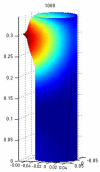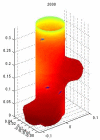Information Processing in the Brain as Optimal Entropy Transport: A Theoretical Approach
- PMID: 33287001
- PMCID: PMC7712441
- DOI: 10.3390/e22111231
Information Processing in the Brain as Optimal Entropy Transport: A Theoretical Approach
Abstract
We consider brain activity from an information theoretic perspective. We analyze the information processing in the brain, considering the optimality of Shannon entropy transport using the Monge-Kantorovich framework. It is proposed that some of these processes satisfy an optimal transport of informational entropy condition. This optimality condition allows us to derive an equation of the Monge-Ampère type for the information flow that accounts for the branching structure of neurons via the linearization of this equation. Based on this fact, we discuss a version of Murray's law in this context.
Keywords: Monge–Ampère equation; Murray’s law; informational entropy; neuronal branching structures; neuroscience; optimal transport; variational calculus.
Conflict of interest statement
The authors declare no conflict of interest.
Figures



References
-
- Pregowska A., Szczepanski J., Wajnryb E. Temporal code versus rate code for binary Information Sources. Neurocomputing. 2016;216:756–762. doi: 10.1016/j.neucom.2016.08.034. - DOI
LinkOut - more resources
Full Text Sources

